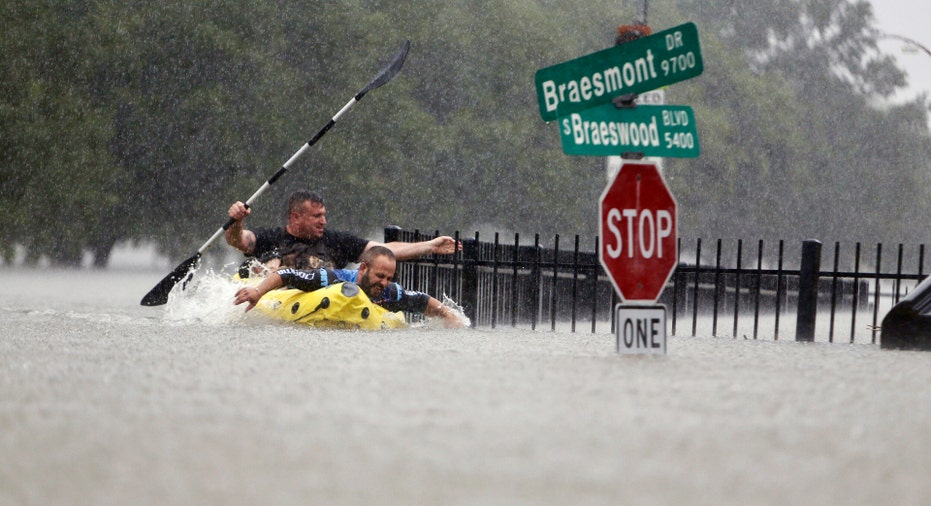Texas flood damage from Harvey may match Katrina: insurance group

Flood damage in Texas from Hurricane Harvey may equal that from 2005's Hurricane Katrina, the costliest natural disaster in U.S. history, said an insurance research group on Sunday.
As heavy rain pounded Houston and Texas's coastal counties, the Insurance Information Institute said it was still too soon to make precise estimates of the damage to homes and businesses.
"It could be a flood loss like Katrina because of the amount of water that's coming in ... not as much wind as it will be water," said institute spokeswoman Loretta Worters.
Hurricane Katrina resulted in more than $15 billion in flood insurance losses in Louisiana and Mississippi that were paid by the National Flood Insurance Program (NFIP), a federal program that is the only source of flood insurance for most Americans.
But Andrew Siffert, the resident Meteorologist at insurance broker BMS Group said it was easy to understand that Harvey will easily reach well over $10 billion in economic loss, and estimated the insured loss at over $5 billion. That figure did not include money that would be paid by NIFP, he added.
The NFIP is already deeply in debt and likely will have to be bailed out again by U.S. taxpayers, as it was after Katrina, to cover the bill for flood damage claims from Harvey.
Having dumped more than two feet (60 cm) of water on Houston already, Harvey, which hit the Texas coast as a Category 4 hurricane but is now a tropical storm, was expected to hover over Southeast Texas for several days and drop more than two more feet of water.
When hurricanes hit, many U.S. homeowners suffer because they have no property insurance. Others who do have it often discover they are not covered for flooding. Wind damage from hurricanes is covered by property insurers; flood damage is not.
"Wind related losses will likely be in excess of $2 billion in insured loss," Siffert said.
For flood damage, property owners must turn to the NFIP, which backs flood policies sold and serviced by private insurers, including Allstate, Assurant and others.
John Dickson, president of NFS Edge Insurance Agency told Reuters, "As of a few hours ago, our business and National Flood Services, the parent company for NFSS has seen over 2,000 claims on NFIP, the federal program."
The NFIP is managed by the U.S. Federal Emergency Management Agency. Policies are sold to property owners by dozens of private insurers, with premiums going to FEMA.
A national poll by the Insurance Information Institute in 2016 showed only 12 percent of people in flood-prone coastal areas had flood insurance, down from 14 percent in 2015.
Dickson estimated as much as 15 percent of the Houston area was insured for flood.
The NFIP was created in 1968 after private insurers stopped selling flood coverage. Critics have said the program provides a misguided tax subsidy to coastal and river valley property owners, encouraging development in flood-prone, often environmentally sensitive areas such as wetlands.
Congressional reform efforts, supported by a coalition of environmental activists and free-market advocates, have largely been thwarted by waterfront real estate interests.
The NFIP owes $24.6 billion to the U.S. Treasury. Many lawmakers are skeptical that debt will ever be repaid.
(Reporting by Kevin Drawbaugh; Editing by Sandra Maler)



















